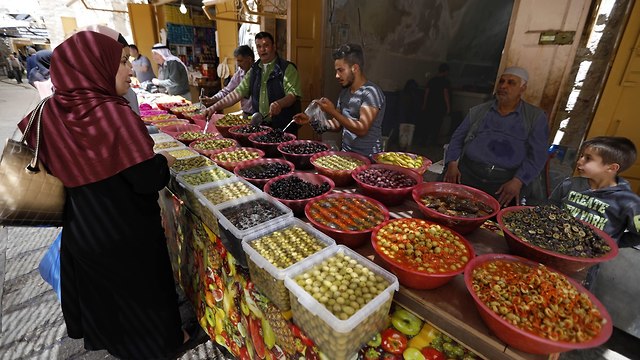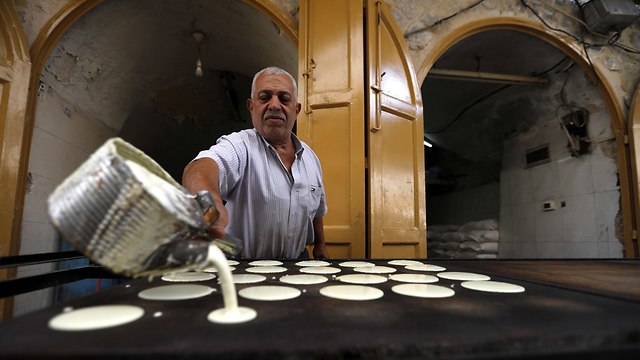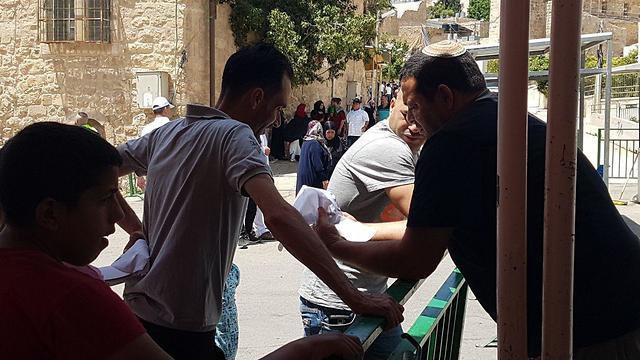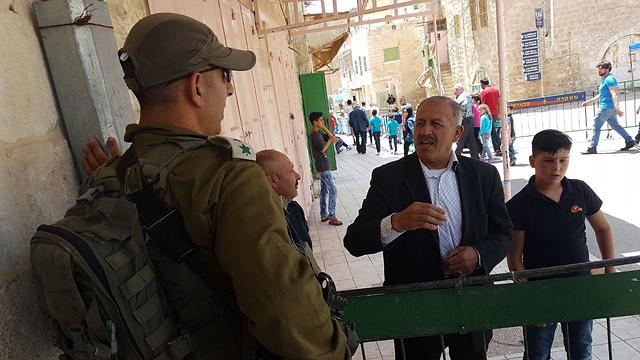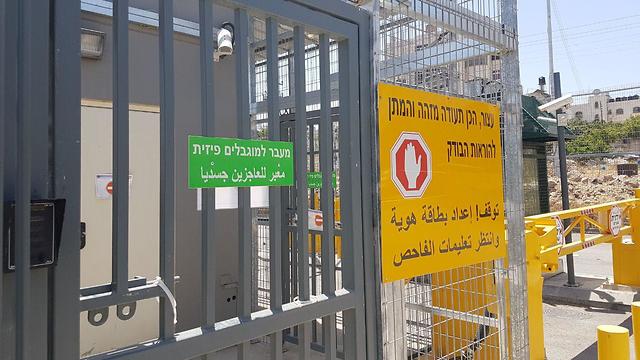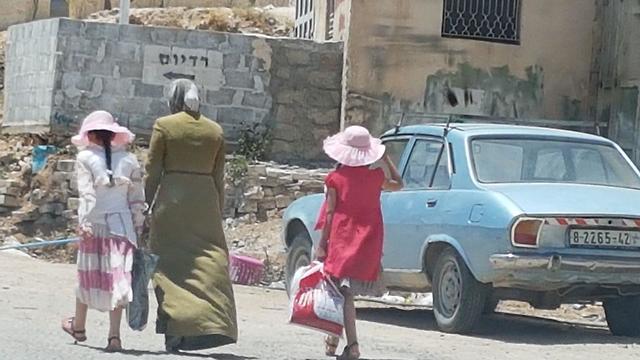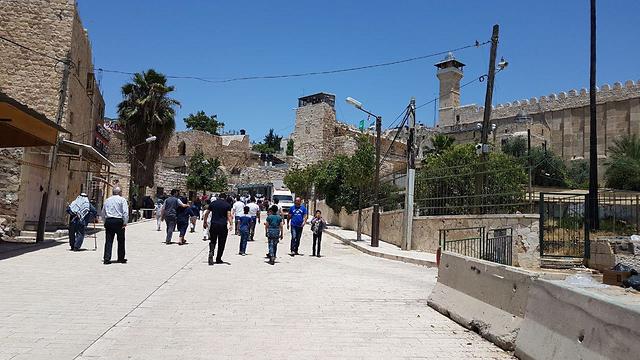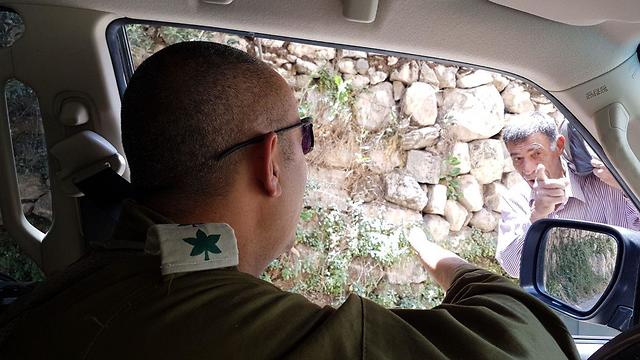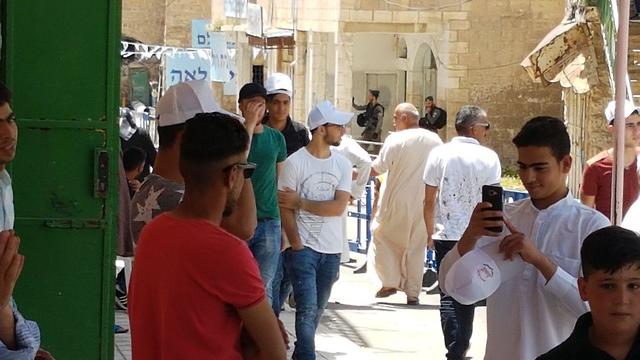

In Hebron, residents choose Ramadan shopping over riots
Less than 3,000 Palestinians went out to protest in the West Bank on Nakba Day in support of Gazans; a tour of the former terror capital of the West Bank reveals residents have remained almost indifferent to the deadly riots in on the Gaza border, some even asking the Hebron brigade commander to apprehend would-be terrorists.
The biggest Palestinian city in the West Bank, with many residents affiliated with Hamas, Hebron was considered up until two years ago the capital of terror in Judea and Samaria.
On Kalev Ben Yefune Boulevard in Kiryat Arba, a Jewish woman hurries home with bags of food, ahead of the holiday of Shavuot. Some 200 meters away, on Zion Route, inside Hebron’s Jewish community, a Palestinian mother and her two daughters return from Ramadan morning shopping.
Within less than an hour, as many as 5,700 Palestinians gather in the adjacent Cave of the Patriarchs, crowded in the halls of the Jewish part of the cave as well, which is fully allocated to Muslims on the Fridays of the main Muslim holiday. As the prayer reaches its climax, Border Police forces close the entrance—not for security reasons, but simply because it is packed to the brim. The prayer continues in perfect silence, and crowds of other people prostrate themselves, despite the scorching heat, in the compound’s yards and on the stone path leading to the cave.
A small quadcopter buzzes several meters above their heads, activated by a Border Police officer to detect any suspicious movements in the nearby alleys.
The Palestinians arrive for the prayer dressed in their finest clothes, some wearing elegant white galabiyas and others—especially the children and the youth—wearing a white flat cap with the caption, “Praying at the Cave of the Patriarchs on Ramadan.” A large blue sign, prepared by the Judea Territorial Brigade, welcomes the worshippers at the entrance to the cave with the “Ramadan Kareem” greeting.
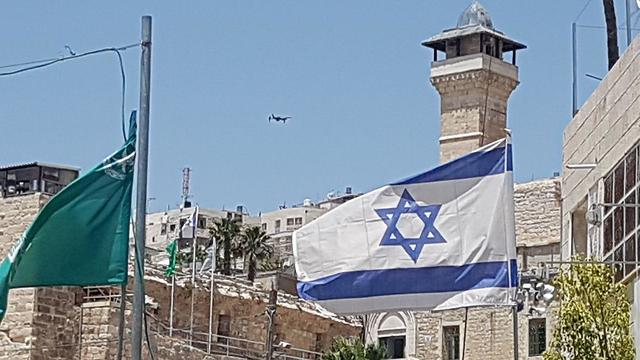
Ofer Ohana, one of the more famous figures in the Jewish community, who some people may recall as the ambulance driver who documented the moments after IDF soldier Elor Azaria shot a neutralized terrorist from a close angle, arrives to exchange a few pleasant words with his Muslim neighbors.
The crowd leaves as quietly as it arrived. The Nahal fighters dispatched to the area to support the paratroopers responsible for the Hebron area, remain in their posts, almost bored.
Less than 3,000 Palestinians went out to protest in the West Bank in the middle of last week to mark Nakba Day and support their Palestinian brethren in the Gaza Strip. This number is smaller than the number of casualties (dead and wounded) in the border fence clashes on May 14.
Hundreds of fighters were deployed as a human blanket in the points of friction and in main roads in the West Bank at the beginning of the week. The inauguration of the US Embassy in Jerusalem was a trigger, at least a potential one, for fanning the flames on the ground. The 62 dead Palestinians in Gaza were supposed to serve as the fuel for a fire of terror attacks and mass riots in Judea and Samaria, but the Palestinians in the West Bank remained indifferent. The surprising calm was maintained in east Jerusalem too, perhaps because of the scorching heat, about 37 degrees centigrade, over the weekend.
“This won’t last forever,” warns Hebron Brigade Commander Colonel Itzik Cohen, a Givati man, who lives, breathes and knows Gaza more than any other area. “The Ramadan period is always explosive and this is only the first day. The prayers will reach their climax on the Saturday before the last Saturday of the holiday.
“Two years ago, during Ramadan, we experienced the murder of Hallel Yaffa Ariel in Kiryat Arba, the murder of Rabbi Miki Mark and the terror attack at Tel Aviv’s Sarona Market (the terrorists came from the Hebron area). The Palestinians know they have a lot to lose and they don’t want to go back to the days of escalation here, including in the economic area.”
About two years ago, when Col. Cohen took office, Hebron was the West Bank’s capital of terror. The complex city, the only one in which Palestinians and Jews live on the same street, and which is mostly affiliated with Hamas, produced serious terror attacks beyond the Green Line as well. Ninety-seven Palestinian would-be stabbers have been arrested in Hebron since January 2017, Col. Cohen says, without being shot.
One of the reasons is a new operational perception formed by the brigade commander: Removing the outdated and dangerous barriers—which are usually comprised of a table, a manual metal detector and a container with no air conditioning—and building crossings further away from the Jewish community, deep in the Palestinian neighborhoods.
Three outdated barriers were cancelled or replaced with seven new, quick and safe crossings, reinforced with concrete. The bottlenecks and the friction have been reduced to a minimum. In the Jewish community in Hebron, fighters hardly patrol the streets anymore. They are deployed in overt or covert activity in the Palestinian territory, in control posts, on rooftops or in newly established posts.
“We work on accuracy and differentiation here,” Col. Cohen notes, pointing at the only remnant—the famous Gilbert Checkpoint, which has seen dozens of terror attacks, including the Azaria incident—a faded red line on the road.
“In any given moment, there are three-four quadcopters and a drone above our heads in the sky, so if a force detects a suspicious movement in the Abu Sneinah neighborhood, a quadcopter is immediately diverted in its direction. As a result, 25 percent of Palestinian would-be stabbers have been apprehended in their neighborhoods, before entering the Jewish community. The Palestinians feel better and safer when we operate in their territory. There is a need to continue the investment in infrastrctures here, to move from a fabric of life to quality of life.”
‘Cave is a microcosm of the Middle East’
As we drive around with Col. Cohen in Hebron, we are stopped by an elderly Palestinian, speaking fluent Hebrew. He asks us not to film his conversation with the brigade commander, in which he asks him to “keep the soldiers alert to the roads leading to the Jewish community in the city, and to catch the bad guys arriving with knives.” The brigade commander wishes him a happy holiday, as well as to another elderly Palestinian leaving the Cave of the Patriarchs after the prayer.
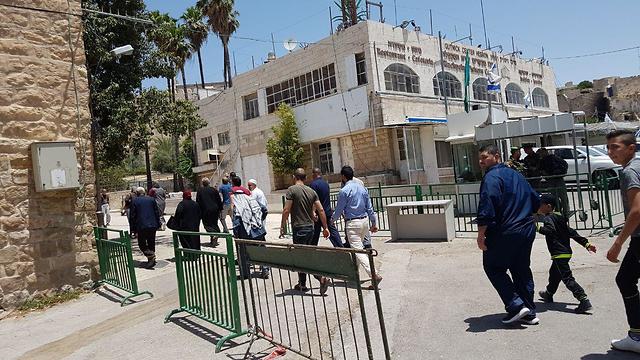
The Palestinian asks the brigade commander to allow elderly worshippers to arrive by car, rather than by foot. The brigade commander promises to look into the request, but recalls a piece of advice he received from the former Central Command chief, Major-General Roni Numa, upon taking office: In a city like Hebron, every move and every change must be made with caution, with measured steps, so as not to fall. That’s likely why the military order still bans Palestinian from opening stores in the heart of the Jewish community.
The change is evident outside Hebron too: Route 60 and Highway 35, which have seen many shooting attacks, have become calmer. The brigade has defined segments of the road using three colors: Red, orange and green, according to the level of threat and history of the area. Communities in the area have been defined the same way and allotted security resources, surveillance measures and military forces accordingly.
“We have no such thing as a route reinforcement,” the brigade commander clarifies. “A squad commander, guarding a threatened segment on Highway 60 with his fighters, stands with a flag of Israel in his hand and is accurately aware of and focused on the importance of his mission. The commanders here carry a compass of responsibility.
“Stone-throwing is a terror attack, and both a company commander and a tracker are dispatched to the area. In such a situation, we activate the Shin Bet and police, and I personally visit the home of the resident whose car was targeted with a stone and promise her to catch the stone-thrower.”
Despite the noticeable physical separation from the Jews, who are arriving to pray at the cave’s “Jewish” yard these days, there is a possibility of a radical right-wing activist throwing a pig’s head at the Muslim worshippers.
According to Col. Cohen, “One incident here at the cave, for example, will clearly make waves across Judea and Samaria. This is the microcosm of the Middle East. Just like I won’t let a Jew enter the cave with a ‘Kahane was Right’ shirt, I won’t let a Muslim enter with a ‘Free Palestine’ shirt.”














